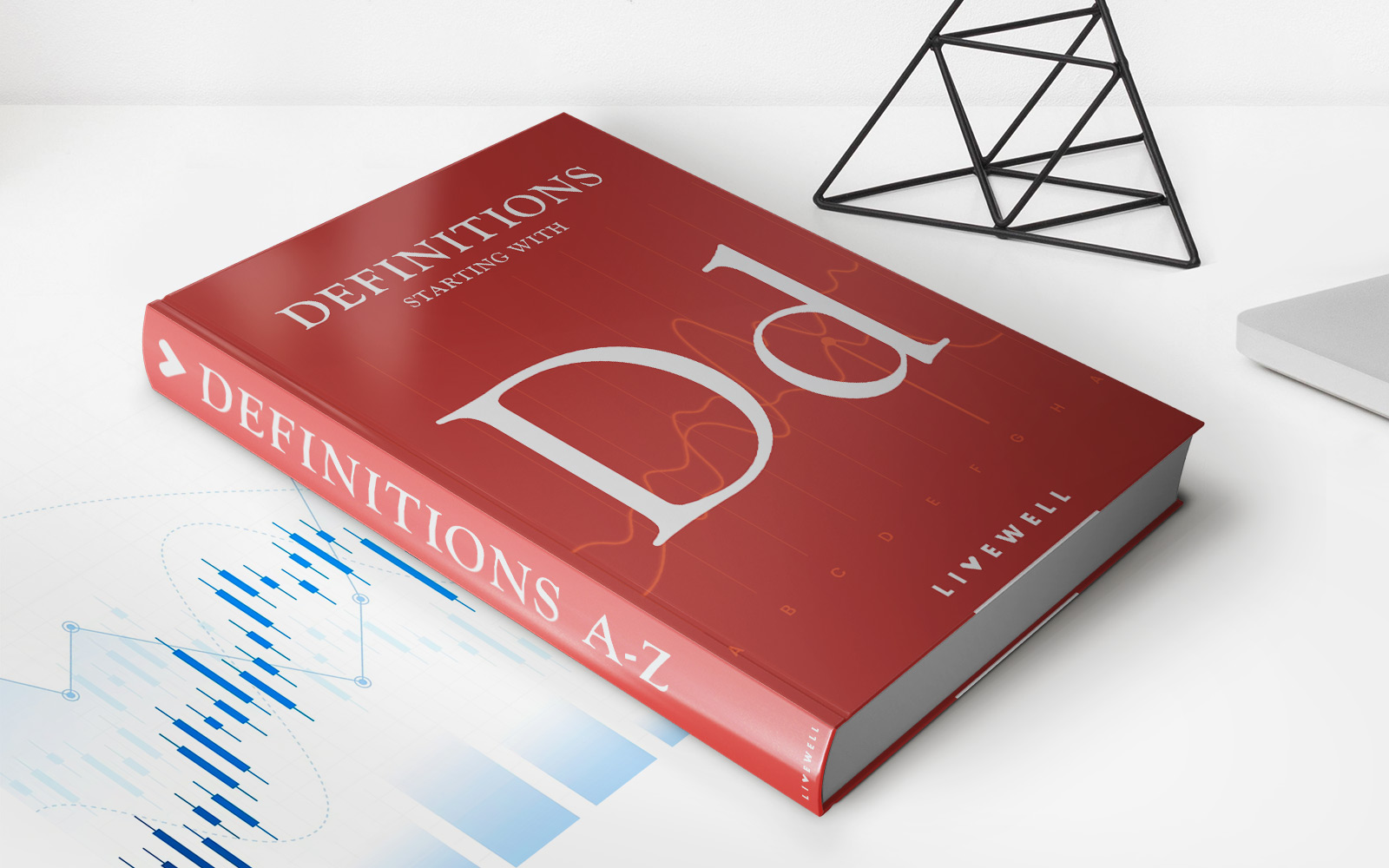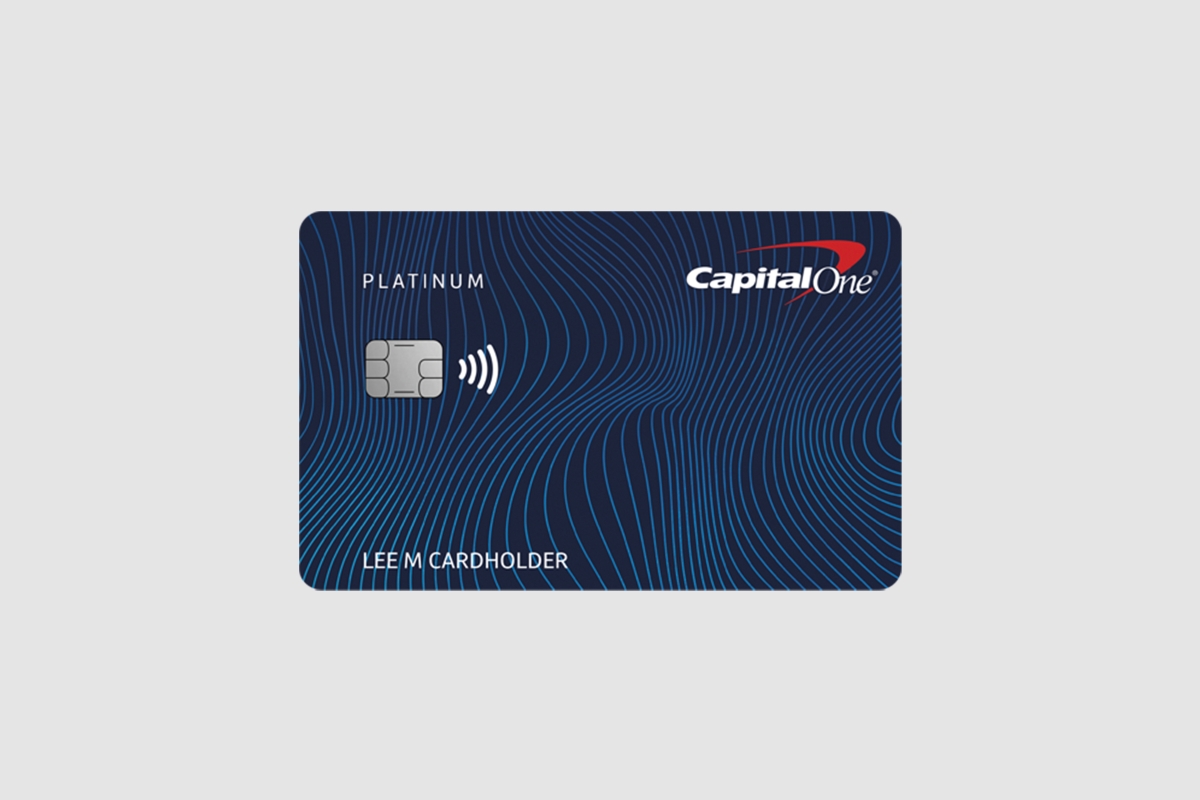

Finance
What Is DMA In Stocks
Published: January 18, 2024
Discover what DMA in stocks means and how it affects your finance portfolio. Explore the benefits and drawbacks of DMA trading in this comprehensive guide.
(Many of the links in this article redirect to a specific reviewed product. Your purchase of these products through affiliate links helps to generate commission for LiveWell, at no extra cost. Learn more)
Table of Contents
Introduction
Welcome to the world of stock trading, where every investment decision can significantly impact your financial future. Whether you’re a seasoned trader or just starting out, it’s important to understand the various strategies and tools available to maximize your success in the market. One such tool that has gained significant popularity in recent years is Direct Market Access, commonly referred to as DMA.
DMA in stocks is a trading method that allows investors to access financial markets and execute trades directly on exchanges. This technology-driven approach provides traders with a unique advantage by bypassing traditional intermediaries, such as brokers, and enabling direct participation in the market. With DMA, investors have the ability to place orders in real-time, making it a powerful tool for those who value speed, control, and transparency in their trading activities.
While DMA may sound complex, its underlying concept is straightforward. By utilizing sophisticated trading platforms and advanced technology, traders can connect directly to the markets and access a wide range of financial instruments. This direct connectivity eliminates the delays and potential miscommunications that can occur when relying on intermediaries, allowing for faster trade execution and potentially better prices.
In the following sections, we will delve deeper into the definition of DMA in stocks, how it works, the different types of DMA available, as well as its advantages and limitations. We will also explore how DMA compares to traditional trading methods, providing you with a comprehensive understanding of this powerful tool and its potential impact on your investment activities. So, buckle up and get ready to embark on a journey into the world of DMA in stocks!
Definition of DMA in Stocks
Direct Market Access (DMA) in stocks refers to a trading method that allows investors to connect directly to financial markets and execute trades without the need for intermediaries. In traditional trading, investors typically place their orders through brokers who act as intermediaries between the traders and the exchanges. DMA eliminates this middleman and enables traders to interact directly with the electronic order books of exchanges, giving them greater control and transparency over their trades.
With DMA, investors can bypass the limitations and potential inefficiencies associated with traditional trading. By connecting to the market’s electronic infrastructure, traders can see real-time order book data, including bid and ask prices, order quantities, and the number of buyers and sellers in the market. This access to granular market data allows traders to make more informed decisions, analyze market trends, and potentially identify better trading opportunities.
DMA also offers increased speed and efficiency in trade execution. As orders are placed directly on the exchange, there is no need to rely on a broker to manually process and submit the order. This can significantly reduce latency, enabling traders to take advantage of market movements and execute their trades at the desired price levels without delay. Additionally, DMA allows for the use of various order types, including market orders, limit orders, and stop orders, providing traders with flexibility in their trading strategies.
It is important to note that DMA is not limited to individual retail investors. Institutional investors, such as hedge funds, asset managers, and proprietary trading firms, also utilize DMA to streamline their trading processes and gain a competitive edge in the market. DMA has become an integral part of the trading infrastructure for both retail and institutional traders, driving innovation and advancements in trading technology.
By leveraging DMA in stocks, traders can benefit from increased control over their orders, faster and more efficient trade execution, access to real-time market data, and potentially improved pricing. However, it is crucial to understand the different types of DMA available and their associated risks and limitations before incorporating this trading method into your investment strategy, which we will explore in the following sections.
How DMA Works
To understand how DMA works, it’s important to grasp the key components and processes involved. At a high level, DMA operates through a combination of advanced technology, trading platforms, and direct connectivity to exchanges. Let’s dive deeper into the mechanics of DMA in stocks.
Firstly, traders need to establish a connection with a DMA provider, which could be a brokerage firm or a specialized technology provider. This connection grants traders access to the trading platform and the underlying infrastructure required for DMA.
Once connected, traders have direct access to the electronic order books of exchanges. They can view real-time market data, including bid and ask prices, order quantities, and other relevant information. Importantly, this data is provided directly from the exchange, ensuring transparency and accuracy.
Traders can submit their buy or sell orders directly into the order book of the exchange. The order is executed based on the available liquidity and the prevailing market conditions. This direct connectivity allows for faster trade execution since there is no intermediary involved in processing the order.
In addition to placing market orders, traders can also utilize advanced order types such as limit orders and stop orders. These order types provide additional flexibility and control over trade execution by specifying the desired price levels at which the orders should be executed.
Furthermore, DMA platforms often offer additional features and tools to enhance the trading experience. These may include real-time market data analysis, charting capabilities, order management systems, risk management tools, and more.
It’s worth noting that DMA is not limited to a single exchange. Traders can access multiple exchanges simultaneously through a unified platform, providing them with access to a broader range of financial instruments and liquidity pools. This ability to trade across various exchanges adds further opportunities for traders to find optimal trade execution and pricing.
In summary, DMA works by leveraging sophisticated technology and direct connectivity to exchanges. Traders establish a connection with a DMA provider, gain access to real-time market data, submit their orders directly into the exchange’s order book, and execute trades based on available liquidity and market conditions. The speed, control, and transparency offered by DMA make it an attractive trading method for investors looking to optimize their trading activities.
Types of DMA
There are several types of Direct Market Access (DMA) available to traders, each offering unique features and catering to different trading preferences. Let’s explore the most common types of DMA in stocks:
- Single Broker DMA: This type of DMA is offered by a single brokerage firm, allowing traders to connect directly to the exchanges through the broker’s trading platform. Traders can access real-time market data, place orders, and execute trades on multiple exchanges using a unified interface. Single broker DMA is suitable for traders who prefer simplicity and convenience, as they only need to establish a connection with a single provider.
- Multi-Broker DMA: Multi-broker DMA provides traders with access to multiple brokerage firms and their respective trading platforms. This type of DMA allows traders to compare prices and liquidity across different brokers and choose the most favorable options for their trades. Multi-broker DMA is beneficial for traders seeking competitive pricing and enhanced order routing flexibility.
- Co-Location DMA: Co-location DMA involves placing trading servers in close proximity to the exchange’s data centers. By reducing network latency, co-location DMA enables traders to execute orders even faster, minimizing the impact of network delays and gaining a competitive advantage. This type of DMA is commonly utilized by high-frequency trading firms and institutions requiring ultra-fast trade execution.
- Smart Order Routing (SOR) DMA: SOR DMA employs intelligent algorithms to automatically route orders to different exchanges based on various parameters, including price, liquidity, and execution speed. The aim is to achieve the best possible trade execution by accessing the most favorable prices and liquidity across multiple exchanges. SOR DMA is particularly useful when trading highly liquid securities or when seeking to minimize market impact.
- Dark Pool DMA: Dark pool DMA provides traders with access to alternative trading platforms, known as dark pools, where orders are executed away from the public order books. Dark pools are designed to facilitate large and block trades while reducing market impact. This type of DMA is favored by institutional investors and traders seeking anonymity and improved execution for large orders.
It’s important to consider your trading objectives and preferences when selecting the type of DMA that suits you best. Factors such as execution speed, pricing, order routing capabilities, and access to specific exchanges or liquidity pools should be taken into account. Consulting with a knowledgeable broker or technology provider can help you identify the most appropriate DMA solution for your trading needs.
Advantages of DMA in Stocks
Direct Market Access (DMA) in stocks offers several advantages to traders, making it an attractive trading method for those looking to optimize their trading activities. Let’s explore some of the key advantages of DMA:
- Speed and Efficiency: DMA provides traders with direct access to exchanges, eliminating the need for intermediaries and reducing trade execution time. Traders can place orders in real-time and take advantage of market movements instantly, potentially improving trade execution and minimizing the risk of slippage.
- Transparency: DMA offers traders access to real-time market data, including bid and ask prices, order quantities, and other relevant information. This transparency allows traders to make more informed decisions, analyze market trends, and potentially identify better trading opportunities.
- Better Pricing: By connecting directly to exchanges, DMA can provide traders with the opportunity to access better pricing. Traders can see the order book and participate in the market, potentially getting executed at more favorable prices compared to relying on a broker who may introduce additional costs or widen spreads.
- Increased Control: DMA gives traders greater control over their trades. They can set specific price levels for their orders and choose the order type that suits their trading strategy. This flexibility allows traders to fine-tune their trades and execute them according to their desired parameters.
- Access to Multiple Exchanges: DMA enables traders to access multiple exchanges simultaneously through a single platform. This access to various exchanges provides traders with a broader range of financial instruments, liquidity pools, and trading opportunities. Traders can compare prices and liquidity across different exchanges and choose the most favorable options for their trades.
- Faster Information Flow: DMA allows traders to receive market data, news, and analysis in real-time. This timely information flow empowers traders to react quickly to market events and make informed trading decisions.
- Flexibility in Trading: DMA platforms often offer a wide range of order types and features, allowing traders to customize their trading strategies according to their preferences. Traders can utilize advanced order types such as market orders, limit orders, stop orders, and more, tailoring their trades to their specific risk and reward objectives.
Overall, DMA provides traders with speed, control, transparency, and flexibility, enabling them to participate more actively in the market and potentially improve their trading outcomes. It is important to note, however, that while DMA offers numerous advantages, it is not without risks and limitations, which we will explore in the next section.
Limitations and Risks of DMA in Stocks
While Direct Market Access (DMA) in stocks offers numerous advantages, it is crucial to understand the limitations and risks associated with this trading method. Here are some key considerations to keep in mind:
- Complexity: DMA requires traders to have a solid understanding of market dynamics, order types, and trading strategies. Without proper knowledge and experience, traders may make suboptimal decisions or be exposed to increased risk.
- Technological Risks: DMA heavily relies on technology and the stability of trading platforms. Technical glitches, network failures, or other system malfunctions can disrupt trading activities and lead to potential losses. Traders must have backup plans and risk management strategies in place to mitigate technological risks.
- Market Volatility: While DMA can provide faster trade execution, it also means that traders are more exposed to rapid market movements. During periods of high volatility, prices can change quickly, and orders may be executed at less favorable prices or not filled at all. Traders must be prepared for increased market risk and potential slippage.
- Liquidity Concerns: DMA enables traders to access a wide range of financial instruments and exchanges. However, not all securities and markets may have sufficient liquidity, especially in smaller or less liquid markets. Thinly traded securities can increase the risk of limited price transparency or difficulty in executing trades at desired prices.
- Algorithmic and High-Frequency Trading: The rise of algorithmic trading and high-frequency trading (HFT) in DMA can pose challenges to individual traders. HFT firms can take advantage of faster execution speeds and sophisticated trading algorithms, potentially impacting the pricing and liquidity dynamics in the market.
- Market Data Costs: Access to real-time market data, particularly for multiple exchanges, may come with associated costs. Traders should be aware of the fees involved in accessing and utilizing market data, as these costs can impact overall trading profitability.
- Regulatory Compliance: Traders must adhere to regulatory requirements when utilizing DMA. Failure to comply with these regulations can lead to legal and financial consequences. It is essential to stay up-to-date with regulatory changes and ensure the necessary compliance measures are in place.
It is vital for traders to thoroughly assess their risk tolerance, trading knowledge, and technological capabilities before engaging in DMA. Implementing risk management strategies, staying informed about market developments, and continuously monitoring trades can help mitigate the risks associated with DMA and enhance the overall trading experience.
DMA vs Traditional Trading
Direct Market Access (DMA) has significantly disrupted traditional trading methods, offering unique advantages and a different approach to executing trades. Let’s compare DMA with traditional trading to better understand the key differences:
- Order Execution: In traditional trading, orders are typically routed through a broker who manually processes and submits the order to the exchange. This process introduces delays and potential miscommunications, which can impact trade execution. With DMA, orders are executed directly on the exchange, significantly reducing latency and providing faster trade execution.
- Transparency: DMA provides traders with real-time access to the electronic order books of exchanges, allowing them to see the market depth, bid and ask prices, and order quantities. This transparency empowers traders to make more informed decisions and potentially identify better trading opportunities. In traditional trading, traders rely on brokers for market information, which may not provide the same level of transparency.
- Control: DMA offers traders greater control over their trades. Traders can set specific price levels, choose from various order types, and directly interact with the market. In traditional trading, brokers have more control over the order execution process, and traders may have limited visibility and control over how their orders are handled.
- Costs: Traditional trading often involves brokerage fees, commissions, and other transaction costs. These costs can vary based on the broker and the size of the trade. DMA may offer cost advantages as it eliminates or reduces the need for brokers and their associated fees. However, traders should also consider the costs of accessing market data, co-location services, or any additional technology required for DMA.
- Liquidity: DMA allows traders to access multiple exchanges and liquidity pools simultaneously. This expanded access can enhance liquidity and increase the chances of executing trades at favorable prices. In traditional trading, traders may be limited to the liquidity offered by their brokers, which may not provide the same level of market depth.
- Anonymity: DMA offers a level of anonymity, especially in dark pool trading. Traders can execute trades away from the public order books, reducing the risk of market impact. In contrast, traditional trading may involve more visibility and transparency as brokers and market participants can see the orders being executed.
It is important to note that DMA may not be suitable for all traders. Traditional trading methods still have their merits, such as offering personalized advice and support from brokers, particularly for novice traders. Additionally, traditional trading may be more accessible for those who do not have the technological resources or expertise required for DMA.
Ultimately, the choice between DMA and traditional trading depends on individual preferences, trading objectives, and the level of control and transparency desired. Many traders opt for a hybrid approach, combining elements of both DMA and traditional trading to leverage the advantages of each method and optimize their trading strategies.
Conclusion
Direct Market Access (DMA) in stocks has revolutionized the way traders participate in financial markets. By eliminating intermediaries and connecting directly to exchanges, DMA offers numerous advantages such as speed, transparency, control, and access to multiple liquidity pools. Traders can execute trades in real-time, analyze market data, and potentially achieve better pricing.
However, it is important to be aware of the limitations and risks associated with DMA. Traders must possess a sound understanding of market dynamics and trading strategies, and be prepared to navigate technological risks and market volatility. DMA also requires traders to stay informed about regulatory compliance and consider the costs involved in using market data and related services.
When comparing DMA to traditional trading, it becomes clear that DMA provides greater speed and efficiency, increased transparency, enhanced control, and potentially lower costs. However, traditional trading still holds benefits such as personalized advice and support from brokers, especially for novice traders who may require additional guidance.
In conclusion, DMA in stocks offers a powerful trading method that empowers traders to take charge of their trades and potentially improve their trading outcomes. By leveraging technology and direct access to exchanges, traders can make more informed decisions, execute trades faster, and potentially access better pricing. Incorporating DMA into your trading strategy requires careful consideration of individual trading objectives, risk tolerance, and available resources. Whether opting for DMA, traditional trading, or a combination of both, it is crucial to stay informed, continuously learn, and employ effective risk management strategies to navigate the dynamic world of stock trading.














